Shimano’s 105 R7000 and R7020 groupsets deliver nearly all the performance of Ultegra R8000 in a slightly heavier and less refined feeling, but considerably more affordable, package.
It’s a totally unfussy workhorse of a groupset with enough spec options and easy upgrade paths that it will only leave the most demanding riders wanting.
In typical Shimano fashion, tech previously only seen on the brand’s top-tier groupsets has trickled down to the entry-level.
Visually, the groupset has a much more refined finish than 105 5800 – its premium look wouldn’t have been out of place on Ultegra or Dura-Ace a few years ago.
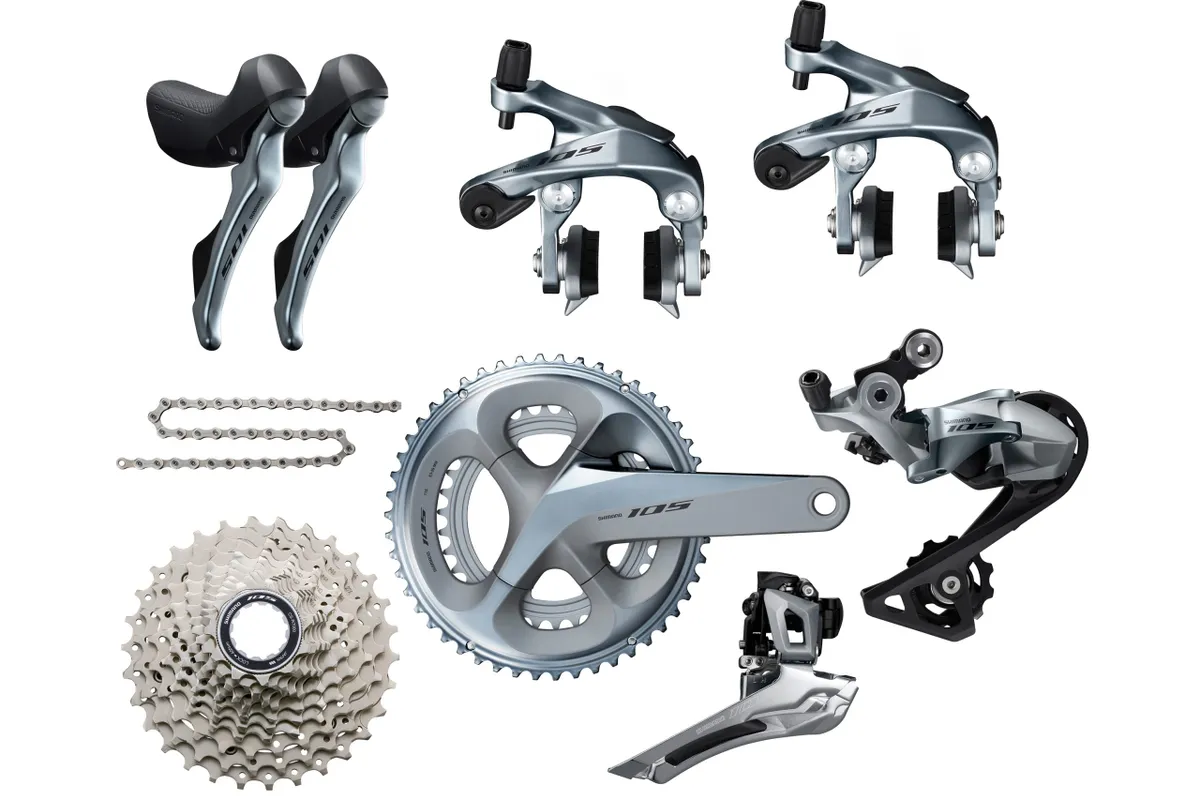
To the delight of many, the groupset is also available in a handsome and classy brushed silver finish.
Like my Ultegra R8000 review, I will deal with each component in isolation. This will make it easier to assess performance if you are planning on upgrading individual parts.
This review was first published in February 2020 and we have updated it with our super in-depth full video review.
A note on pricing
While I will deal with both the disc and rim brake version of the groupset in this review, I have quoted the RRP for a 105 R7000 rim brake groupset as a guide price.
For the sake of completeness, according to Shimano, the 105 R7020 disc brake groupset is priced at £799 / €994.49 / $696 / AU$1,179 at RRP.
None of this really matters though because real-world street pricing never matches Shimano’s published prices. I recommend you refer to your preferred retailer for up-to-date pricing.
Shimano 105 ST-R7000 and ST-R7020 shifters
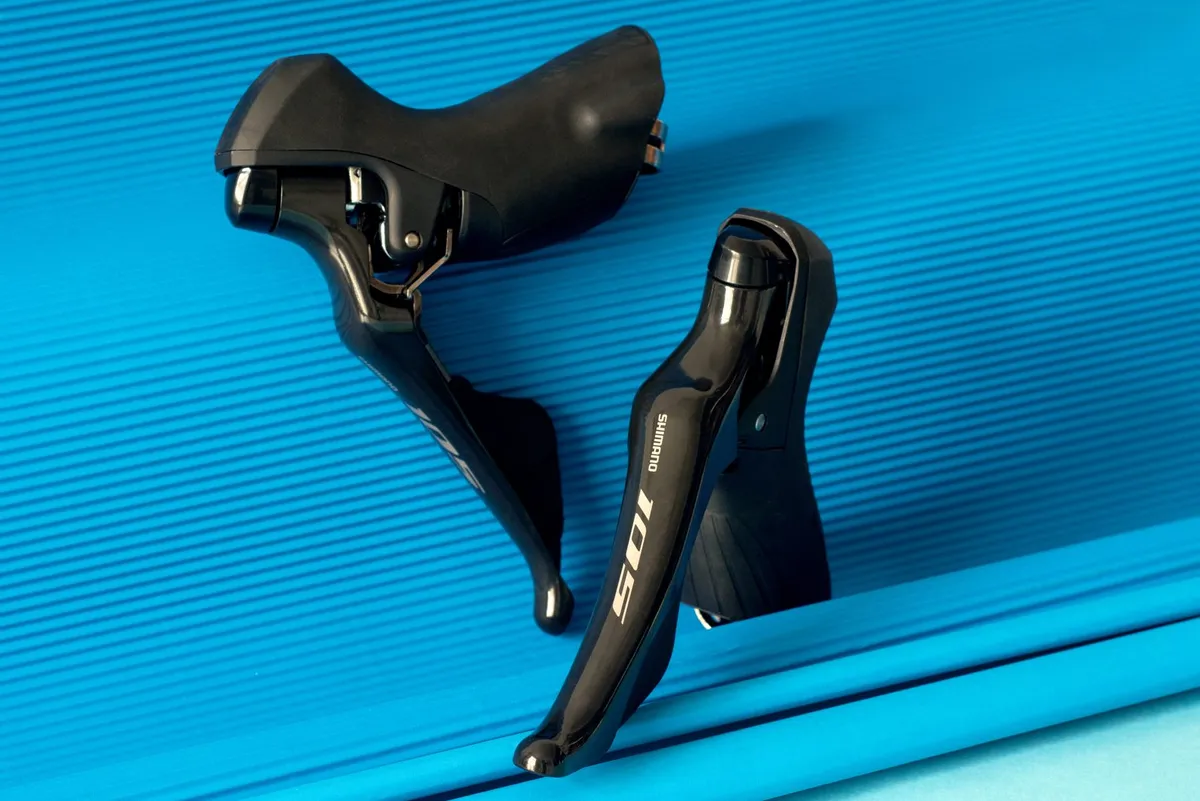
The 105 R7000 shifters (or dual-control levers if you want to use Shimano’s lingo) are outwardly very similar to both Dura-Ace and Ultegra.
All three feature the new-style hood shape, with flattened tops and lightly textured covers.
The overall profile of the lever itself has also been updated, with a more pronounced curve for your index finger. This makes it a smidge easier to brake from the drops.
On the disc side, with 105 R7000, we finally bid farewell to Shimano’s ugliest ever product: the RS505, which was the non-series 105-level disc lever that was almost universally derided for its odd bulbous and lumpen looks.
The new disc brake lever (ST-R7020) is ever so slightly larger than the rim brake lever.
However, if anything, this makes for a broader and more comfortable platform for your hands. Your results may vary depending on the exact dimensions of your phalanges, but the difference between the two is fairly marginal.
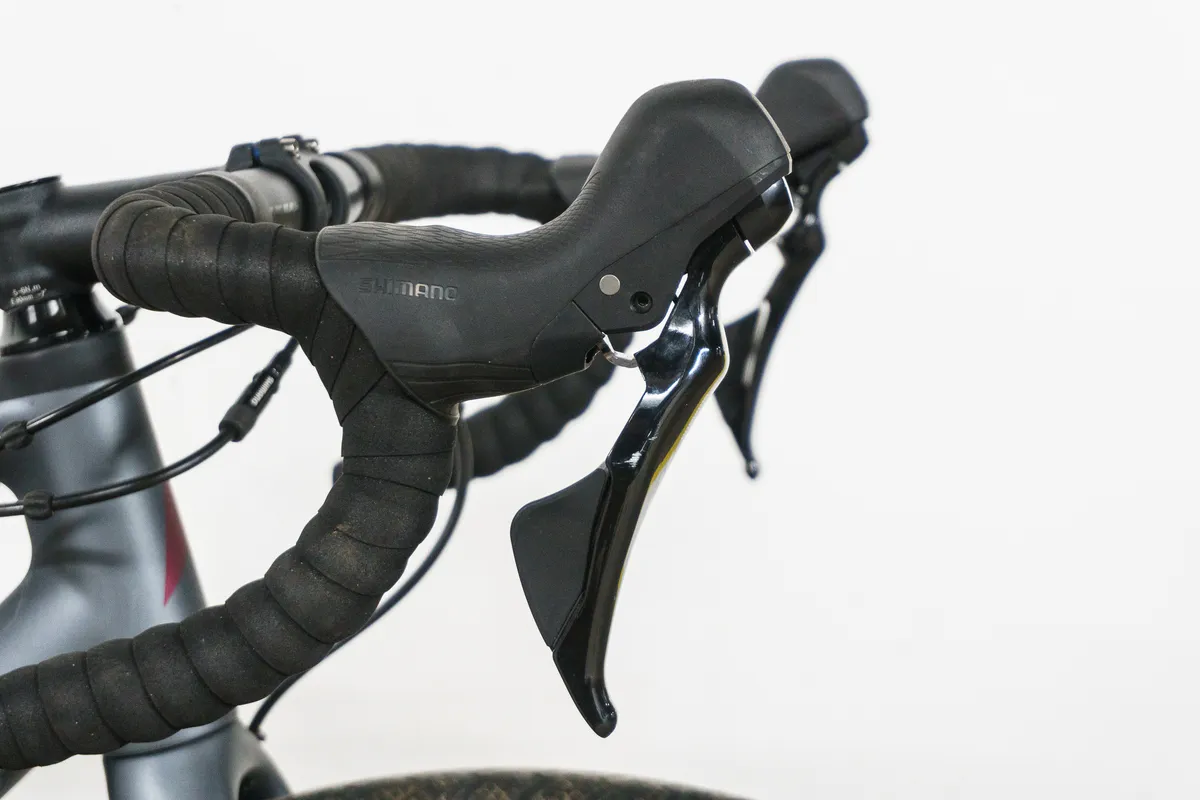
For children, or those with small hands, a smaller hydraulic disc version of the lever (ST-R7025) is available. No smaller version is available for rim brakes.
The main difference between Ultegra/Dura-Ace levers and 105 comes in construction.
The higher-tier groupsets feature a carbon-fibre reinforced plastic body and levers, whereas 105 R7000 gets a glass-fibre reinforced plastic body and alloy levers. This adds a small amount of weight.
On the disc side, moving up to Ultegra or Dura-Ace also gets you Servo Wave.
Servo Wave is a long-running Shimano technology that has been borrowed from the company’s mountain bike brakes. Servo Wave makes the relationship between lever and brake pad movement non-linear, which is said to improve modulation.
I have used both levers extensively and would honestly be hard-pressed to tell the difference between the Servo Wave-equipped and standard levers.
The overall tolerances and build quality of the 105 shifters don’t feel quite as good as Ultegra or Dura-Ace. There is a touch more lateral slop at the lever pivot and the shift levers flex a touch in their housing at the end of their stroke.
It’s worth stressing that none of this is a performance issue. It really is just feel that separates 105-level shifters from Shimano’s higher-tier groupsets.
That said, as your only contact point with the groupset, if I were absolutely desperate to upgrade one part from a complete R7000 groupset, it would probably be the shifters. But I must stress again that the differences are very marginal.
Shimano 105 RD-R7000 rear derailleur
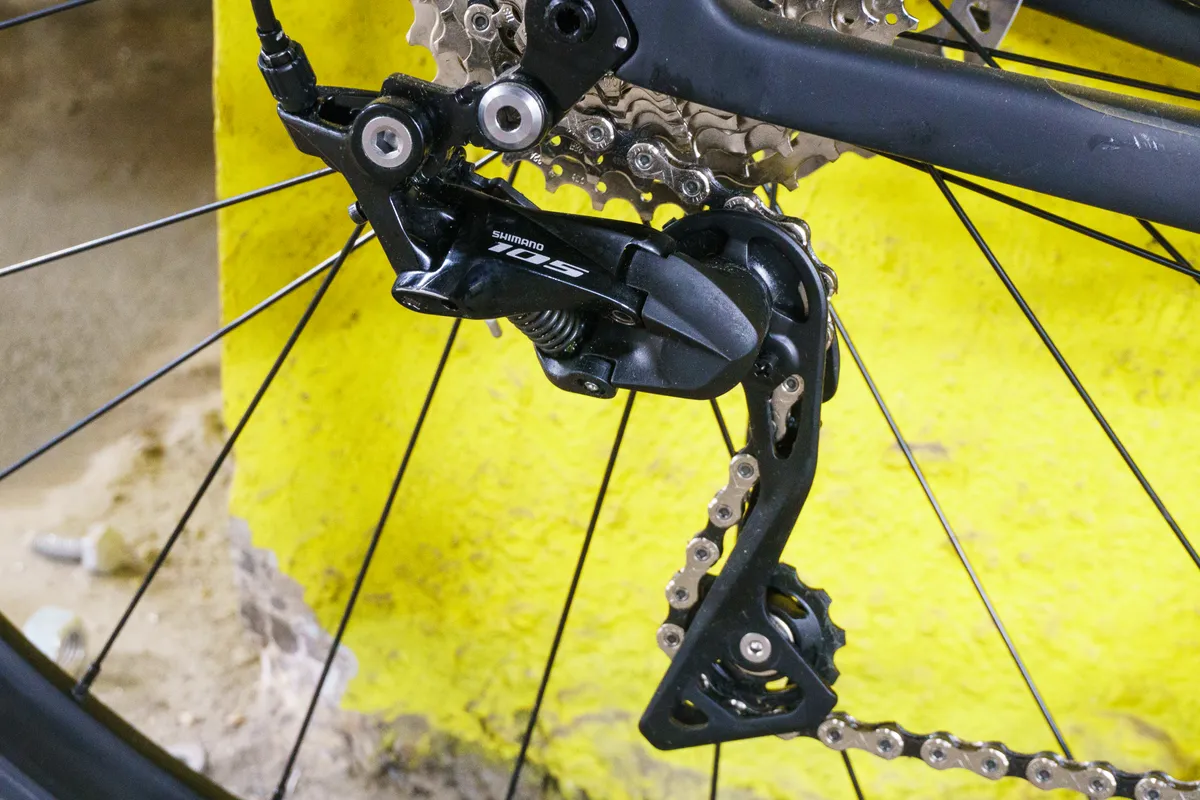
105-level rear shifting is light, predictable and fast. It presents a significant improvement over the previous generation and adopts the brand’s low-profile Shadow construction, which tucks the body of the derailleur out of the way under the chainstay.
For the sake of clarity, I have exclusively tested the medium cage (GS) version of the rear derailleur. However, I expect the short cage (SS) version would perform similarly, if not identically.
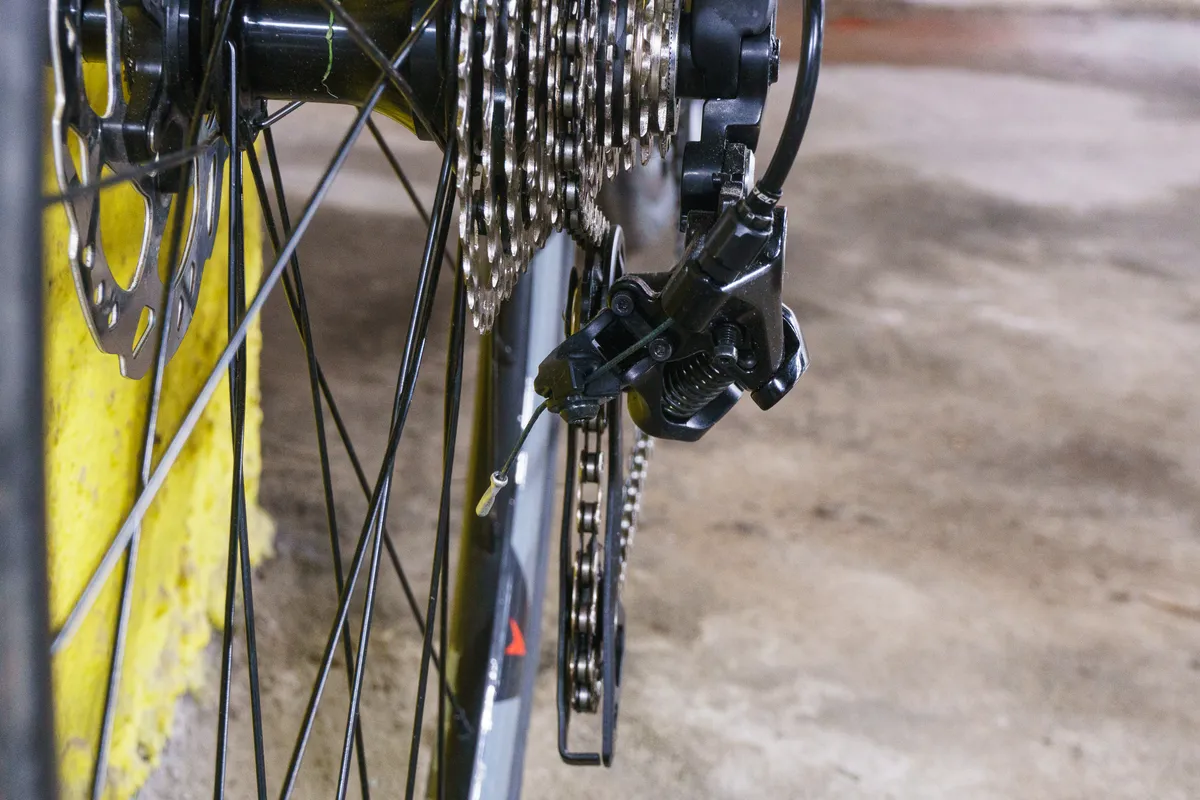
The RD-R7000-GS derailleur offers you the potential to run truly wide-range gears, with a total tooth capacity of 39t.
This would officially allow you to run the lowest-possible gear ratio available at a 105 level (a 50/34t crankset and mated with the non-series CS-HG700 11/34t cassette).
However, as always with Shimano, you could likely push it a little further if you need an even lower gear.
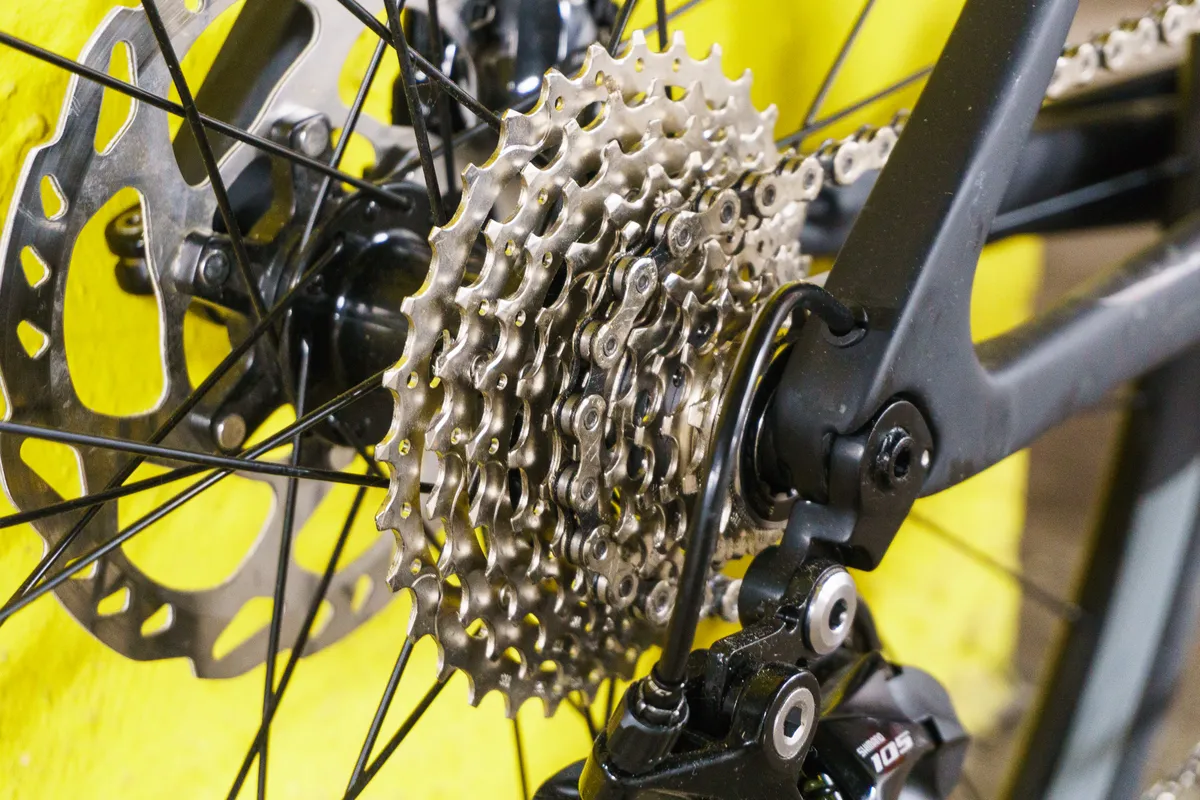
On that note, 105-level cassettes are now available in 11-25, 11-28, 11-30, 11-32t ratios, alongside the aforementioned wide-range CS-HG700 11-34t cassette. That last cassette is compatible with 10-speed freehub bodies.
Compared to Ultegra or Dura-Ace, shifting up the block doesn’t feel quite as crisp under power, but it never skipped or protested, even under the highest output of my impressively middling power.
The overall build of the derailleur doesn’t feel quite as taught as Shimano’s higher-tier groupsets.
If you grab the derailleur and give it a solid twist, there is a little bit more slop in the pivots compared to the higher-tier groupsets. The jockey wheels also run on bushings, compared to a bearing/bushing combo on Ultegra and bearings on both for Dura-Ace.
Again, this makes very little material difference to performance but affects feel.
Shimano 105 FD-R7000-F front derailleur
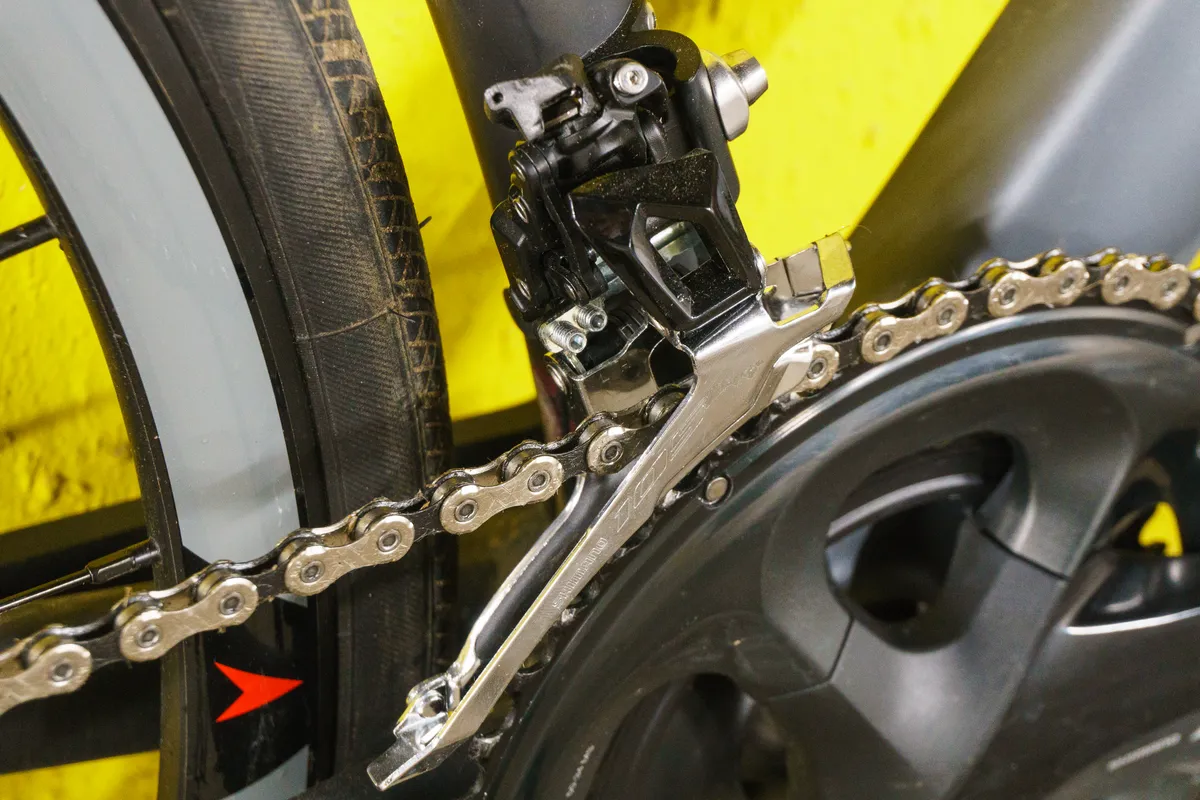
Setup of the groupset presents absolutely nothing out of the ordinary with the exception of the front derailleur.
If you’ve never worked on this new style derailleur, the cable routing presents a bit of a head-scratcher and I highly recommend you refer closely to the manual here.
Initial confusion aside, everything comes together very quickly and the in-built tension adjuster is hugely appreciated. The range of adjustment is limited but is enough for fine-tuning. It also saves you from having to use an ugly in-line adjuster on the cables, neatening up the cockpit.
In terms of performance, the front shifting is almost indistinguishable between 105 and Ultegra. The shifting feels exceptionally light at the lever and there is no lag or hesitation moving between chainrings. This is the one place that Shimano absolutely trumps its rivals.
The new style derailleurs – which lose the super-long actuation arm seen on the previous generation of Shimano road groupsets – have also improved clearances on bikes with sub-optimal chainlines or with wider tyres.
The improved geometry and the small rubber block on the inside face of the derailleur mean you can cross chain with no audible protestation from the drivetrain. Don’t take that as an open invitation to do so, though!
Shimano 105 FC-R7000 crankset
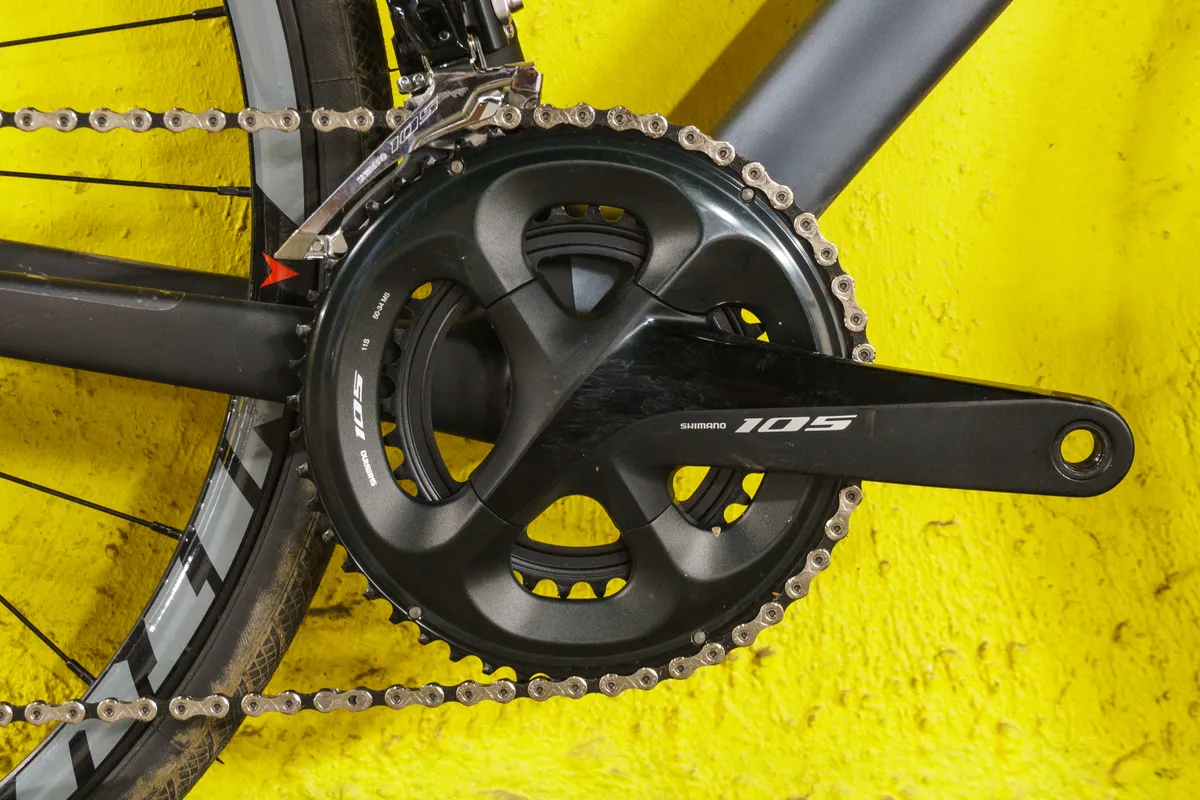
Shimano has stuck steadfastly with its two-piece bonded alloy Hollowtech construction for R7000. Likewise, it has stuck with a 24mm axle, easing compatibility across all bottom bracket standards.
Though it is nominally a 105-level product, the same threaded bottom bracket (SM-BBR60) is now shared across 105 and Ultegra-level groupsets. This new bottom bracket features improved sealing compared to the outgoing model. For press-fit, the SM-BB72-41 bottom bracket remains the same.
105 R7000 cranks are available in 53/39-, 52/36- and 50/34-tooth chainring options.
Ultegra is also available in a 'cross-friendly 46/36 combo, and Dura-Ace in 55/42t and 54/44t ratios. All modern Shimano cranksets share the same asymmetric 110mm BCD (bolt circle diameter) and chainrings can be easily swapped between tiers as you please if you need a unique combination.
There are also lots of aftermarket options available if you want to try oval rings or something equally fruity.
A 175mm crankset with a 52/36 chainring setup weighed 752g on our scales. An Ultegra R8000 crankset in the same combination weighs a claimed 681g, so this is one of the few places there is a significant difference in weight between the two tiers.
With that said, this would never be a deciding factor for me. To steal Matthew Loveridge’s phrase, 105 is light enough, and that ~70g difference doesn’t matter in the real world.
I have never managed to elicit the slightest amount of flex from a Shimano crank of any level. The same is true of Shimano’s 105 R7000 cranks.
I think the crankset is the centrepiece of any groupset and the new design feels and looks much better than the outgoing 105 5800 groupset. The finish also appears much harder-wearing, with any heel rub taking far longer to appear.
Shimano 105 BR-R7010 rim brakes and BR-7070 disc brakes
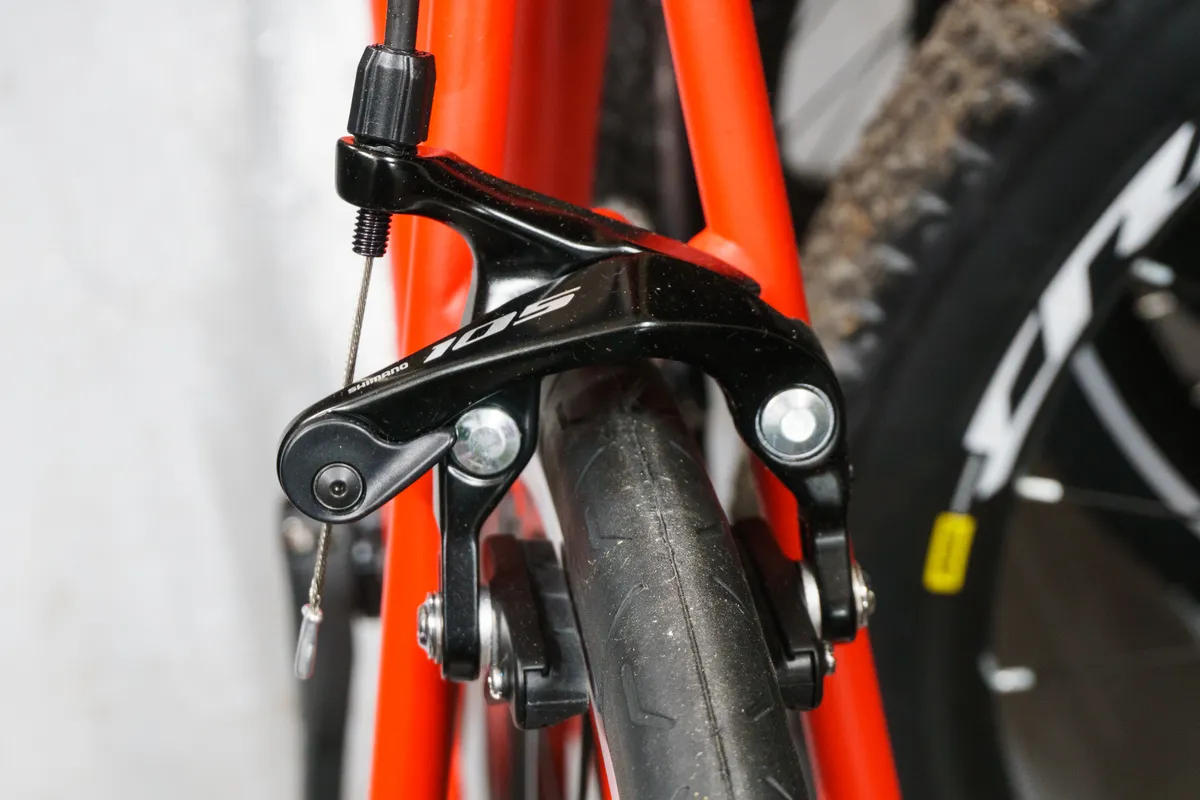
Rim braking at a 105-level is a significant improvement to power over the previous generation, though the feel at the lever isn’t quite as snappy and sharp as Ultegra.
I suspect this is due to the lack of stiffening plate between each pivot that is present on the Ultegra and Dura-Ace calipers.
The omission of this plate – a small component that must cost pennies to produce – on 105 seems a bit mean-spirited and feels like downgrading for the sake of it.
Clearance on the caliper brakes has also been improved and is now more than capacious enough to easily swallow a mudguard and 28mm Panaracer GravelKing tyre mounted to a H+Son Archetype rim.
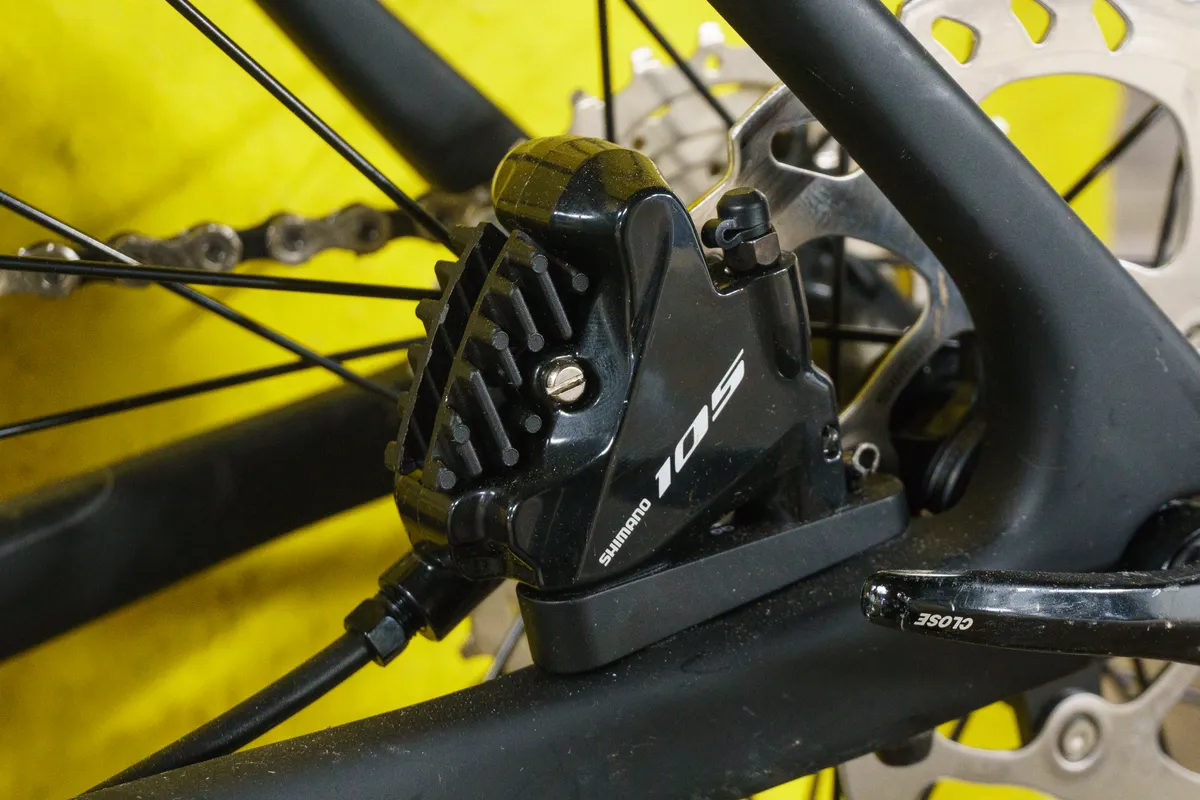
On the disc side of things, under normal conditions, I would struggle to tell the difference between 105 and higher-tier disc brakes.
Shimano disc braking is so, so good, from the very top-end right to the bottom. There is tonnes of power available and the feel at the lever is excellent.
This is true of all Shimano groupsets but I also like that the pad clearance is more generous than on SRAM. This means that in grimy conditions or when riding gravel, you won’t suffer from the constant hiss and grind of pads on the rotor.
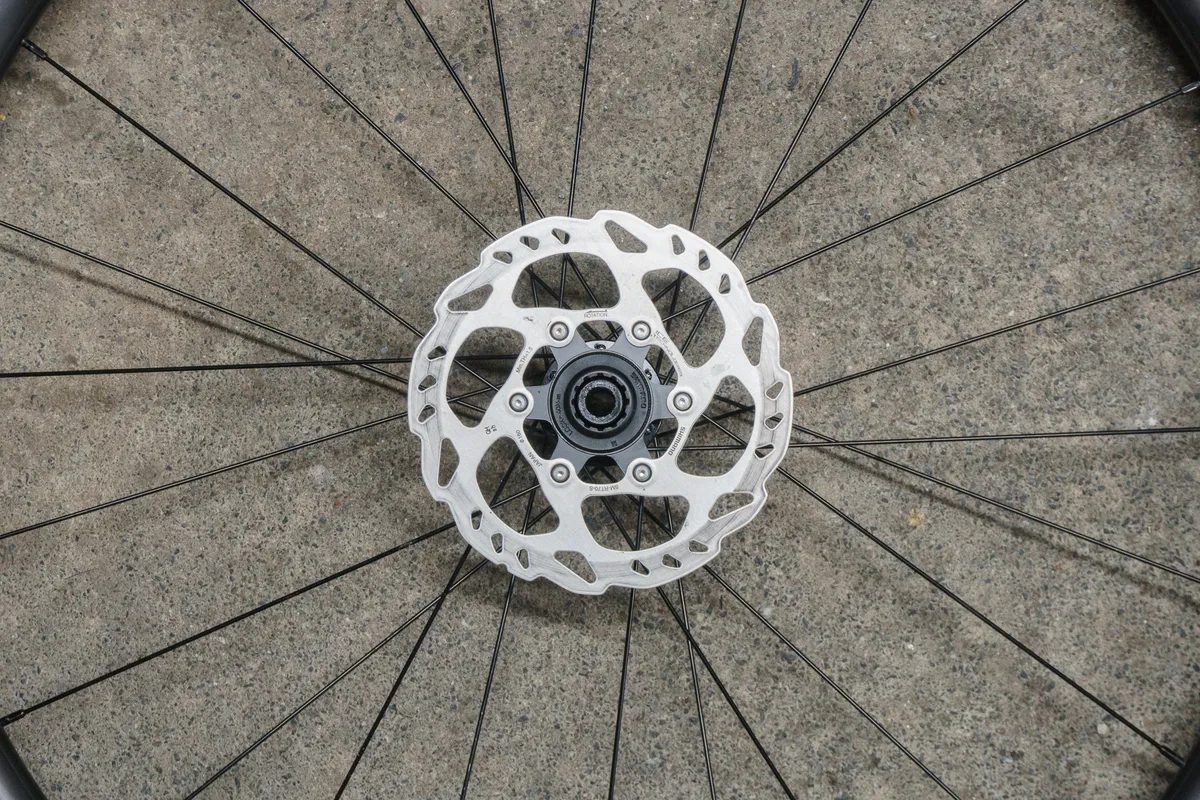
It is possible that on extended descents, switching to Ice Tech-equipped rotors – which help to dissipate heat – would make an appreciable improvement to performance. They also look way cooler (eyy) than the standard 105-level SM-RT70 rotors, which is what really matters.
It’s worth mentioning that 105 R7000 disc brake calipers are now only available in flat mount fitment.
If you would like to fit the disc version of the groupset to an older IS or post mount frame, you will either have to run a non-series caliper or use one of these adaptors from Canadian homebrew outfit, A.S Solutions. This adaptor will only work on certain frames.
No official Shimano converter exists and I am not aware of any other brand producing adaptors for flat mount brakes. Please tell me if I am wrong on that last point in the comments.
Shimano 105 R7000 groupset review conclusion
Beyond weight and feel, there is now very little that separates 105 from Ultegra.
If a super-snappy and premium feel is important to you, I would be tempted to stump up the extra cash for Ultegra. R8000 feels every bit as good as Dura-Ace 9100 and is just that bit nicer feeling than 105 R7000.
Likewise, if you’re a chronic weight weenie, Ultegra may be a tempting option. Determining a definitive complete groupset weight is a fool’s errand because there are so many potential spec variables.
However, working off real-world weights, you can expect a roughly 310g weight saving with Ultegra R8000 compared to 105 R7000 depending on spec.
For a rim brake groupset, at street prices, moving to Ultegra would amount to about £160 more outlay.
But if you want an utterly dependable and affordable groupset that has nearly all of the performance of Shimano’s higher-tier groupsets, then 105 R7000 comes very highly recommended.
Product
| Price | 999.00 AUD,995.00 EUR,595.00 GBP,685.00 USD |
| br_whatWeTested | Shimano 105 R7000/R7020 groupsets |
Features
| br_crankOptions | double |
| br_speed | 11 |
| br_cassetteOptions | 11-25t, 11-28t, 11-30t, 11-32t |
| br_chainringOptions | 53/39t, 52/36t, 50/34t |
